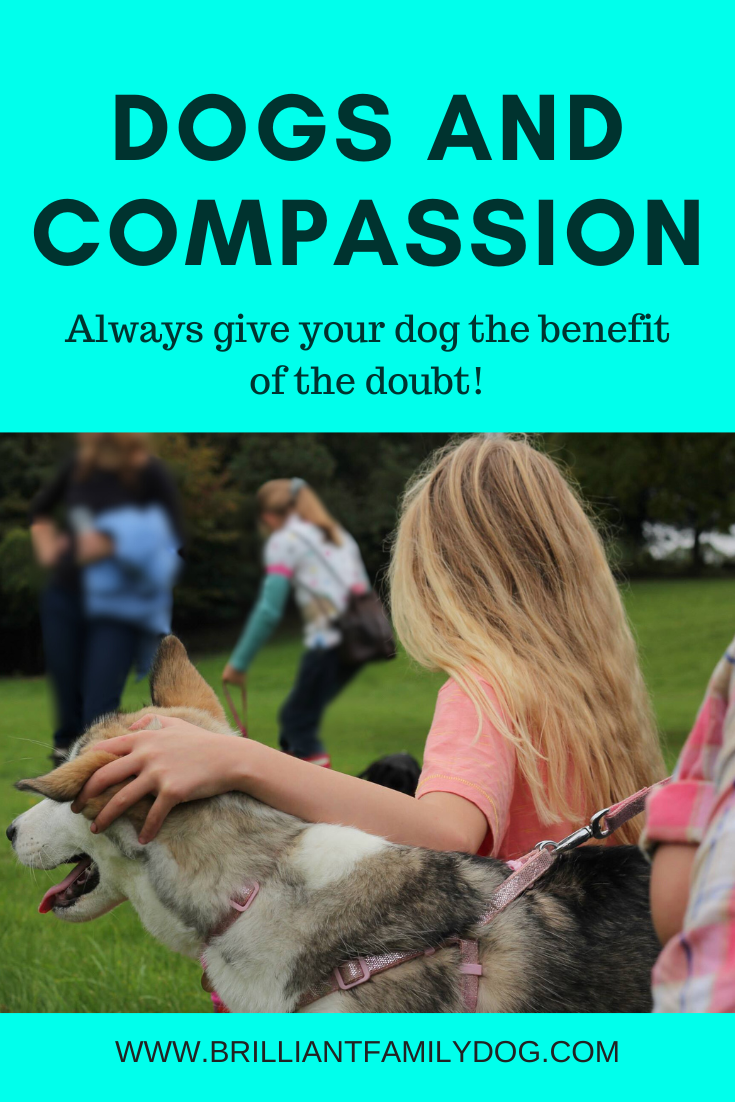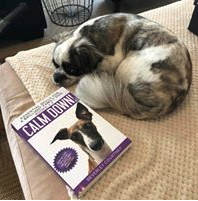There are things we have to do to our dog. Let’s make them into things we do with our dog!
There’s grooming, hunting for ticks and other beasties, claw-clipping and grinding, perhaps administering eye ointment, drying feet … there’s a lot we have to do to keep our dogs fit and healthy.
So it’s important that you don’t just grab your dog (like vets often do) and inflict “treatment” on them!
I appreciate that vets are always in a hurry. But there are some excellent ones who clear it with the dog first before touching them … and then there are the smash-and-grab ones, who can set up a lifelong fear of the vet in a couple of hasty and ill-considered seconds.
So to get this going smoothly, you need to get buy-in from the dog, and make it easier all-round.
Here’s an excerpt from one of my Growly Dog Books
Is it you that’s causing the pain?
The key here is that your dog will associate something with any pain or discomfort he’s feeling. That something he’s latched on to may be the approach of a person holding a broom. It may be entering the vet’s surgery. It may be being manhandled so you can reach his claws. So if you have to administer a treatment which may be uncomfortable, it’s a good idea to get him to associate something else with this pain, and not you!
There are various techniques about that focus on the dog giving you permission to treat him - having him become a party to his own treatment.
Picture this: you go to the dentist for your appointment. While you’re talking to the receptionist, the dentist creeps up on you, grabs your jaw and forces it open to poke instruments in. Horror! This is an assault! And yet isn’t this what people often do to their dogs?
A better scenario would be that you go into the dentist’s surgery. He indicates The Chair. Now when you get into that chair you are effectively giving the dentist permission to open your mouth and start poking about in there. It’s just as unpleasant as before - but this time you gave your consent.
So get your dog to give you consent by transferring the “this may hurt” feelings onto something else. Some people use a pot of treats on the floor. As long as the dog sits or lies still in front of that pot he’ll be given a treat. Gradually you can pick up a paw or start brushing a tail while you dish out the treats. If your dog leaps up and flees, let him. When he ventures back he can choose to station himself in front of the treat pot again. He’s saying, “Ok, you can brush me now”. You could also get out the implements he’s worried about - the nail clippers or the claw-grinder, and perhaps use a particular mat for him to sit on, which you only use for treatments. When he comes to you, you can reward him for his bravery. He knows what’s going to happen - you’re not going to jump him.
If you call your dog over for a cuddle then grab him and swing him over onto his back so you can check his tangles, how’s he going to feel next time you call him?
Choice, choice, choice! Think of that dentist and let your dog have a say in his own care.
📖 Read more here: www.brilliantfamilydog.com/growly-boxset📚
And here’s a video of my Border Collie Yannick being introduced to Chirag Patel’s excellent Bucket Game. Note that he is free to come and go and take whatever position he likes.
We moved on quickly after these sessions, and I’m now “allowed” to hold all Yannick’s paws and clip his nails without any of the fear he was showing previously.
















